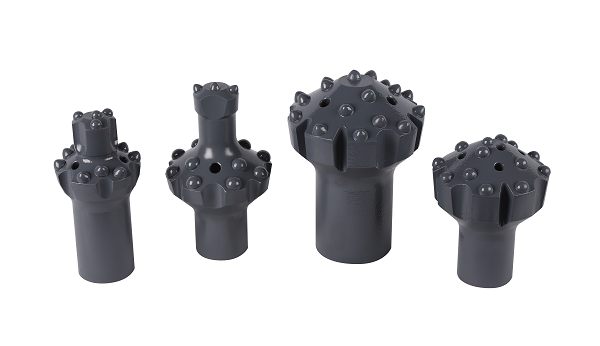Abstract:Drilling is a crucial process in various industries, including mining, construction, and oil exploration. To achieve eff...
Drilling is a crucial process in various industries, including mining, construction, and oil exploration. To achieve efficient and accurate drilling, specialized tools such as reaming bits and Down-The-Hole (DTH) bits are utilized. While both bits serve the purpose of drilling, they differ in terms of design, functionality, and areas of application. This article aims to provide a comprehensive comparison between reaming bits and DTH bits, highlighting their similarities and differences.

Reaming Bits:
Reaming bits are cutting tools specifically designed for enlarging existing holes. They feature a cylindrical body with multiple cutting edges, usually in the form of carbide inserts or diamond impregnated segments. Reaming bits are commonly used in applications where hole enlargement is required, such as in well drilling or tunneling. The cutting edges of reaming bits scrape away the material from the hole's walls, gradually expanding the diameter to the desired size. This process ensures greater accuracy and a smooth finish.
DTH Bits:
DTH bits, on the other hand, are designed for percussive drilling operations. They are primarily used in rock drilling applications and are particularly effective in hard formations. DTH bits consist of a steel body with tungsten carbide buttons or inserts, strategically positioned to deliver impact energy to the rock formation. Compressed air or other fluids are used to propel the piston, which strikes the bit's face, creating a percussive force. The impact fractures the rock, and the bit's cutting structure breaks it into smaller particles, which are then flushed out of the hole by air or drilling fluid.
Comparison:
Design and Structure:
Reaming bits and DTH bits exhibit notable differences in their design and structure. Reaming bits typically have a cylindrical shape with multiple cutting edges, whereas DTH bits have a conical or spherical shape with strategically placed carbide buttons or inserts. The design of reaming bits facilitates smooth hole enlargement, while DTH bits focus on effective rock fragmentation.
Application Areas:
Reaming bits are primarily employed in situations where hole enlargement is necessary, such as well drilling or tunneling. Their design allows for precise control over the hole diameter and a superior finish. In contrast, DTH bits find their application in percussive drilling operations, especially in challenging rock formations. They excel in delivering high-energy impact to break the rock efficiently.
Drilling Efficiency:
Reaming bits offer enhanced drilling efficiency in terms of accuracy and surface finish. They are ideal for achieving tight tolerances and maintaining hole straightness. On the other hand, DTH bits are known for their exceptional drilling speed in hard formations. The percussive action of DTH bits enables efficient rock penetration, making them suitable for demanding drilling conditions.
Depth Capability:
In terms of depth capability, reaming bits are typically employed in shallow to medium-depth drilling operations. Their focus on accuracy and finish makes them a preferred choice for applications where precision matters. DTH bits, with their robust design and impact energy, are often used in deep drilling operations, particularly in mining and oil exploration.
While reaming bits and DTH bits share the purpose of drilling, they differ significantly in design, functionality, and areas of application. Reaming bits are suitable for hole enlargement and offer precise control over diameter and surface finish. DTH bits, on the other hand, excel in percussive drilling operations, delivering high-energy impact for effective rock fragmentation. By understanding their respective strengths and areas of application, drilling professionals can choose the most suitable bit for their specific drilling requirements, ensuring optimal performance and productivity.

 简体中文
简体中文 English
English España
España русский
русский
